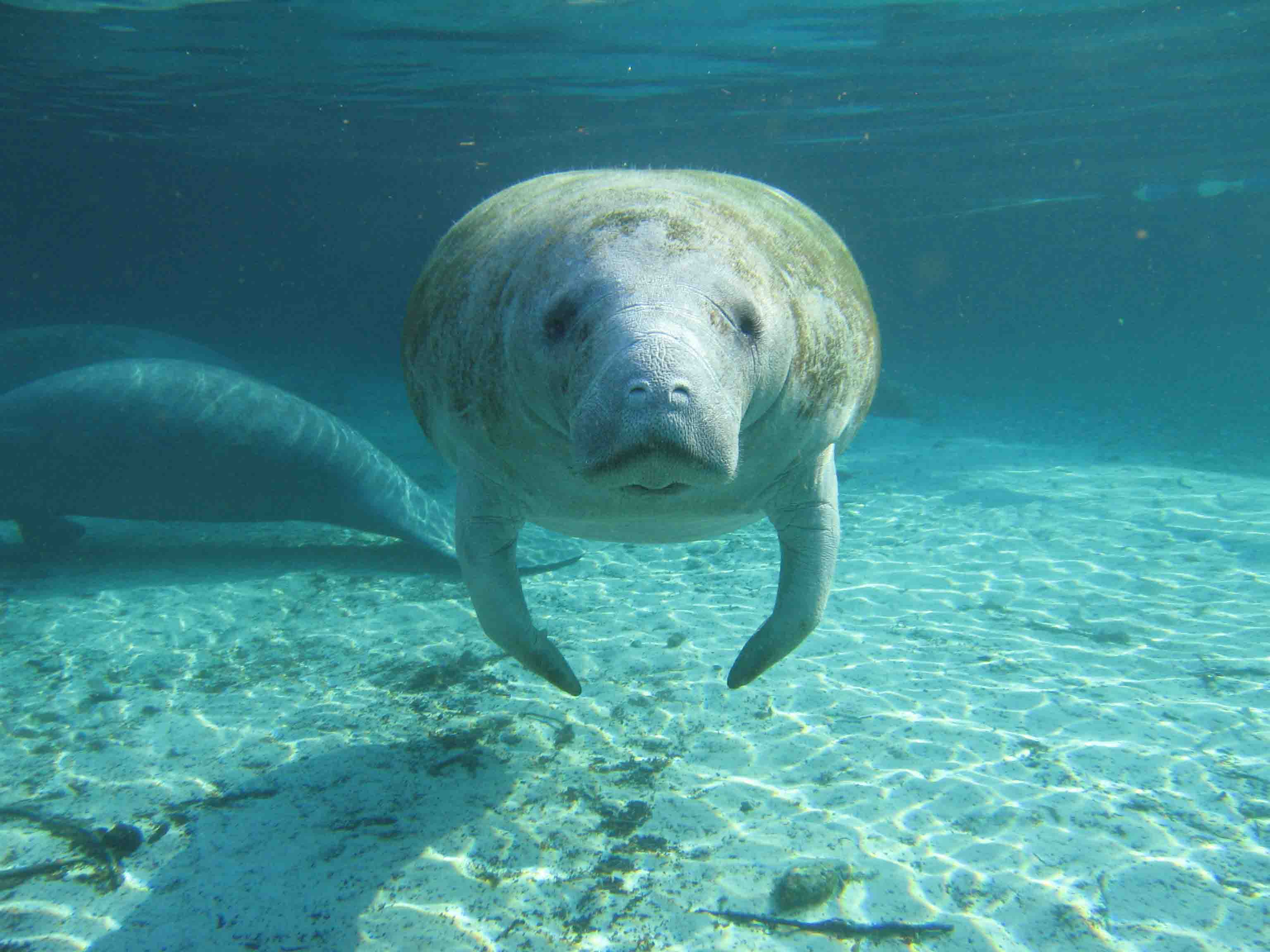
It was an important holiday this week in the United States: National Fart Day.
This past Monday, February 5, was the day we set aside to celebrate the very natural act of passing gas. After all, the average person farts between 10 and 20 times every day. This adds up to about the same amount of gas as half of a 2-liter bottle of soda daily. That may seem like a lot, but don’t worry – about 99% of the gas we pass is odorless!
But while human farts are just a byproduct of getting air out of our digestive tract, farting serves an essential purpose for one animal: the manatee.
Mermaids?
Before we get to farts, let’s talk about mermaids. In his first journey to the Americas, Christopher Columbus recorded the first written sighting of mermaids off the prow of his ship. He remarked that they were “not so beautiful as they are said to be, for their faces had some masculine traits.” (Voyages of Columbus)
But contrary to what ancient sailors believed, manatees are not mermaids. Yes, manatees can do tail stands in shallow water to appear to rise out of the sea, and their bodies could look like humans from a distance. But trust me, manatees are definitely not mermaids.
Still, mistaking a manatee for a mermaid was such a common mistake that the scientific name for manatees and their relatives, dugongs, is Sirenia, Latin for “of or belonging to the Sirens.”
Tropical swimmers
There are three species of manatees: the Amazonian manatee (Trichechus inunguis), the West Indian manatee (Trichechus manatus), and the West African manatee (Trichechus senegalensis). The manatees you may be most familiar with, the Florida manatees, are a subspecies of the West Indian manatee.
Unlike other marine mammals like whales, manatees lack a thick, insulating layer of body fat. They’re actually pretty lean, with just one inch of body fat! This restricts manatees to warm tropical or subtropical waters. For the Amazonian manatee, this means staying in the warm waters of the Amazon River basin; it is the only manatee species to live exclusively in freshwater.
In contrast, West Indian and West African manatees can easily move between freshwater and saltwater. In fact, Florida manatees will migrate almost 200km inland along the St. John’s River. Blue Spring State Park is a warm winter haven for Florida manatees, and just this year, there was a record-breaking 932 manatees wintering there.

Slightly weird mammals
Here’s a fun fact: the manatee’s closest living relatives are elephants and hyraxes. Scientists believe that manatees were land-living animals that evolved to live underwater. The oldest shared ancestor between elephants and manatees was apparently a pig-like, 4-legged mammal that looked like a “cross between a hippopotamus and an otter.”
But you can still see hints of the shared evolutionary history between elephants and manatees today. Like elephants, manatees have toenails on their front flippers. And a manatee’s mouth is very dextrous, much like an elephant’s trunk. Teat positioning also indicates the shared evolutionary history between elephants and manatees. Unlike most animals, elephants (and humans) have just two teats on their chests. These two teats have migrated slightly off the chest and behind the front flippers in manatees. Put another way: manatees have armpit nipples.

The switch from land to water also means that manatees have weird characteristics. For instance, unlike other aquatic mammals, manatees have nostrils instead of blowholes. Manatees are the only mammals with 6 neck vertebrae instead of 7, along with the two-toed sloth. Manatee skin is continuously flaking off; this is an adaptation to help keep algae and barnacles from building up on their bodies.
The purpose of farts
Here’s where the farting comes back into play.
As a mammal, manatees don’t have swim bladders. Swim bladders are gas-filled organs found in bony fish that help them regulate their buoyancy in the water.
Manatees partially deal with the no-swim bladder issue through their dense bones, which make them neutrally buoyant and have the same density as the surrounding water.
But how do they go up or down in the water? This is where gas comes in: by contracting their diaphragm, manatees can store gas in their large intestine that helps them float to the surface. Swimming deeper simply requires getting rid of this gas through some farts. In fact, constipated manatees can get stuck at the water’s surface when they can’t fart!
Given the importance of farting in their lives, I wonder how manatees celebrated National Fart Day.

Resources

Leave a Reply